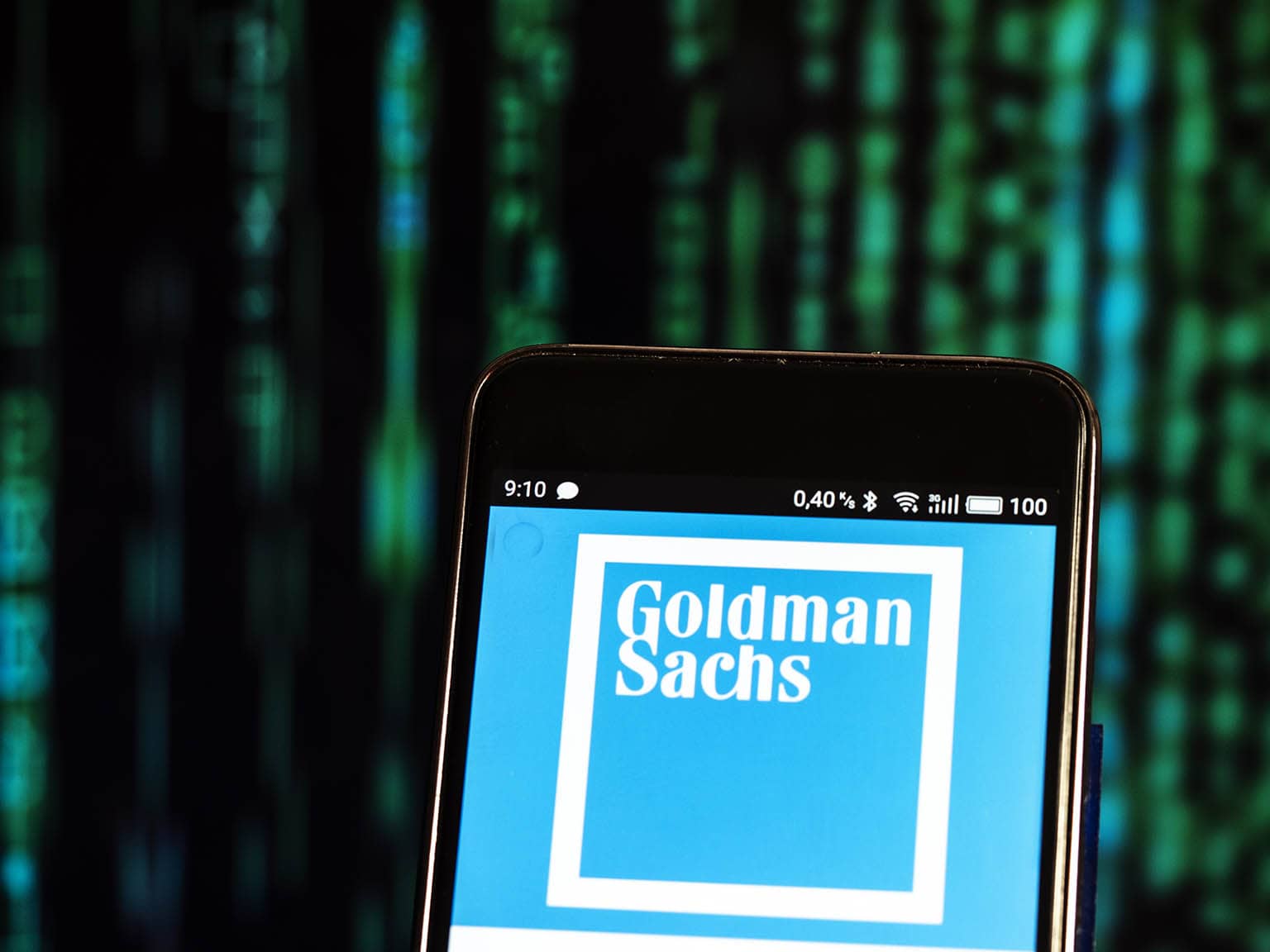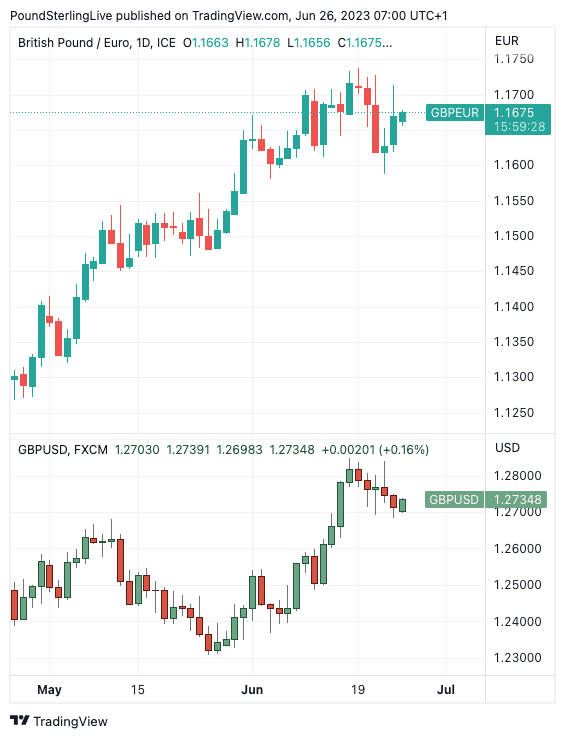Pound Sterling Put On a "Firmer Footing" vs. Euro & Dollar Says Goldman Sachs in post-Bank of England Assessment
- Written by: Gary Howes
-

Image © Adobe Stock
The British Pound should remain supported says Goldman Sachs in an analysis of the currency's outlook that follows last week's Bank of England's decision to raise interest rates by 50 basis points.
It was "time for the hawks to screech," says Michael Cahill, a strategist at Goldman Sachs in London, "it seems the Bank of England did just that."
The Bank has long been accused by financial market analysts as being too slow to wake up to the threats posed by rising inflation, often arguing that in-house forecasts revealed it would fall as quickly as it had risen.
The reticent stance has been attributed by analysts to contributing to currency weakness for much of 2022.
But the Bank of England itself acknowledged last week that "the second-round effects in domestic price and wage developments generated by external cost shocks were likely to take longer to unwind than they had done to emerge."
Above: GBPEUR and GBPUSD (bottom) at daily intervals.
This change in sentiment set up the scene for a larger-than-expected 50bp hike that some analysts said was a sign the Bank has now adopted a more proactive footing in an effort to regain credibility.
The development appears to have contained the upward march in short-term UK bond yields, a key driver of the rise in the cost of borrowing - albeit near elevated levels.
Cahill says the decision has helped steady UK bond and currency markets "just in time."
"The currency reaction to (last) week's inflation print had some of the concerning markings of last Autumn, in a sign that the market was starting to question whether policymakers would be up to the challenge," he explains.
The Pound to Euro exchange rate fell 0.60% to 1.1621 following the release of stronger-than-expected inflation on Wednesday but recovered to end Bank of England day higher at 1.1635.
It has subsequently extended the recovery to 1.1675 at the time of writing. Meanwhile, the Pound to Dollar exchange rate has moved lower, as this pair is heavily dominated by the Dollar's broader recovery trends, hitting 1.2736 at the time of writing Monday.
But Cahill says the Pound should remain supported and it is too soon to suggest further rate hikes will instead become a negative driver.
"The decision to step up the pace in itself demonstrates at least some discomfort with the previous framework that called for more patience," says Cahill, noting Governor Bailey said that he felt it was "absolutely imperative" to respond as they did.
Cahill says this suggests that, while careful not to prejudge future meetings, the Bank of England felt that policy needed to switch tracks.
Goldman Sachs economists are calling for another 50bp in August given the ongoing robust nature of economic data which suggests any near-term slump in inflation is unlikely.
"This should lend further support to Sterling. Unlike last Autumn, the inflation and activity data now point in the same positive direction, so there is less of a trade-off," explains Cahill.
Meanwhile, Goldman Sachs currency strategists are "deeply sceptical of the idea that more aggressive rate increases risks weakening the currency by lowering growth."
"As long as policymakers remain committed to higher real rates, that should support GBP, while other domestic assets may suffer (such as house prices and equities)," says Cahill.
Goldman Sachs forecasts the Pound-Dollar exchange rate at 1.24 on a three-month horizon, 1.26 on a six-month horizon and 1.29 in 12 months.
The Euro-Pound forecast profile for the same time frame is 0.86, 0.87 and 0.87, giving a Pound-Euro projection of 1.16, 1.15 and 1.15.






